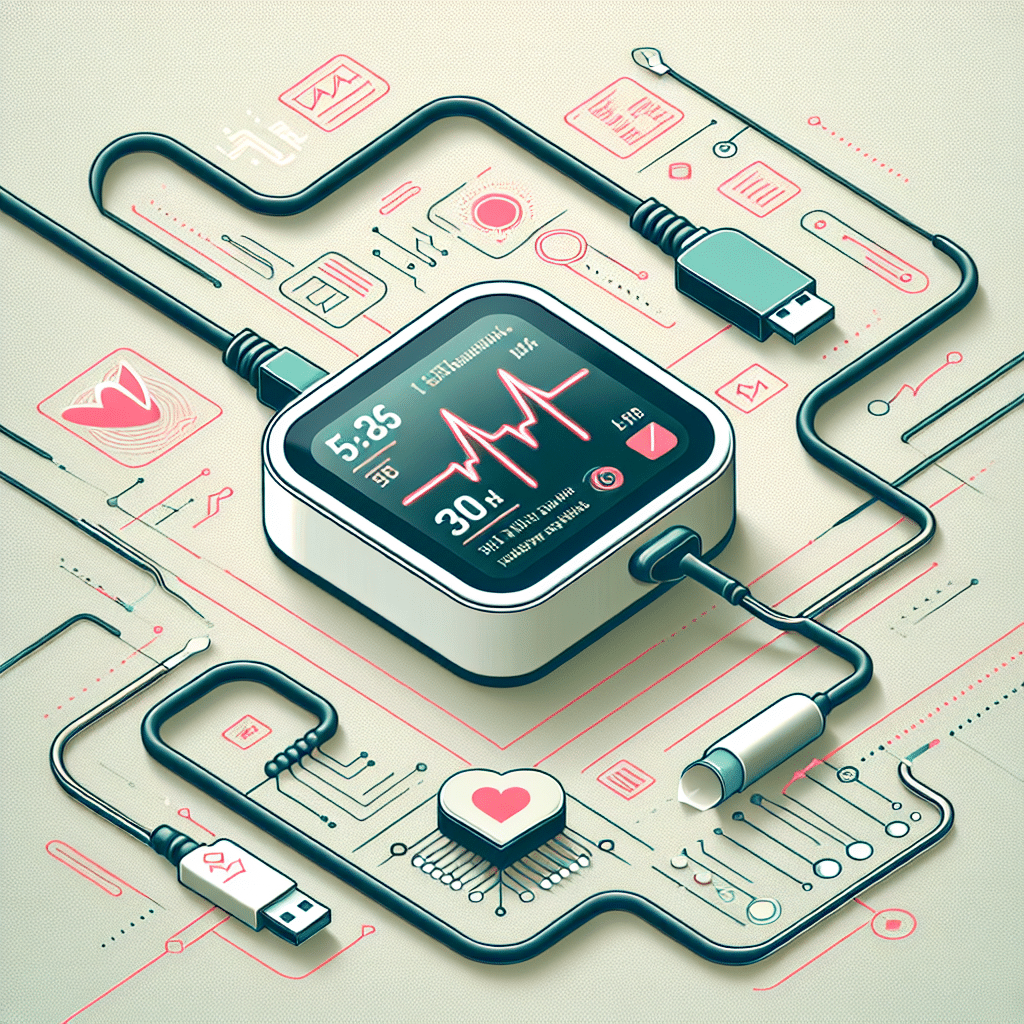What are Portable Heart Monitors?
Portable heart monitors, also known as cardiac monitors or handheld ECG devices, are compact medical devices that allow users to continuously track their heart’s rhythm and activity from the comfort of their home. These devices are essential for patients with heart conditions, enabling them to detect arrhythmias, irregular heartbeats, or any concerning changes without frequent hospital visits.
Types of Portable Heart Monitors
1. Holter Monitors
Holter monitors are wearable devices that record the heart’s electrical activity over a 24 to 48-hour period. This type of monitor typically consists of several electrodes placed on the patient’s chest, connected to a small recording device worn on a belt or around the neck. Holter monitors provide extensive data on heart rhythms during daily activities.
2. Event Monitors
Event monitors are suitable for patients who experience infrequent symptoms. These devices are worn for weeks and activated by the user when symptoms occur, recording a short period of heart activity. Event monitors typically have two types: manual-trigger and automatic-trigger, the latter of which can detect abnormal heart rhythms automatically.
3. Portable ECG Devices
Modern portable ECG devices have come a long way, allowing users to measure their heart’s electrical activity using smartphone apps and chest straps. These devices use advanced technology to facilitate real-time monitoring and can provide immediate feedback to healthcare providers.
Features to Consider
User-Friendliness
The design of portable heart monitors varies, but they should be intuitive and easy to use. Look for devices with straightforward instructions and interfaces that allow users to easily start and stop monitoring.
Battery Life
Since these devices are meant for prolonged use, a long battery life is crucial. Many models come with rechargeable batteries or extended-use capabilities, ensuring that users can monitor their heart health without frequent interruptions for recharging.
Data Accuracy
Accuracy in readings is paramount. Opt for devices that have been clinically validated and approved by regulatory bodies like the FDA or CE. Users should also consider how often the device is calibrated to ensure consistent reliability.
Connectivity
Many portable heart monitors today are equipped with Bluetooth or Wi-Fi capabilities, allowing them to sync data with smartphones, tablets, or cloud-based services. This feature enables easy data sharing with healthcare providers, enhancing collaborative care.
Benefits of Portable Heart Monitors
Continuous Monitoring
Portable heart monitors facilitate continuous daily monitoring of cardiac activity, allowing early detection of abnormalities that may not be captured during a standard physician visit.
Convenient Data Sharing
With connectivity features, users can quickly share their data with healthcare professionals, enabling timely interventions and adjustments in treatment plans.
Cost-Effective
For many patients, portable heart monitors can be a more economical alternative to frequent cardiologist visits, reducing healthcare costs while still ensuring monitoring and care.
Empowerment and Engagement
By using portable heart monitors, patients take a more active role in managing their health. This increased engagement can enhance compliance with treatment recommendations and lifestyle changes.
Popular Portable Heart Monitors
KardiaMobile
The KardiaMobile device by AliveCor is a widely recognized portable ECG monitor that offers a simple cardiac assessment via a smartphone application. Users can take a reading within 30 seconds by placing their fingers on electrodes, and the app interprets the results, identifying normal sinus rhythm or atrial fibrillation.
Omron HeartGuide
This innovative wearable wrist monitor not only tracks heart rhythms but also measures blood pressure. With its smartwatch design, it can seamlessly integrate into a user’s daily routine, providing comprehensive heart health insights.
Withings Move ECG
The Withings Move ECG is another user-friendly option that combines classic watch design with ECG monitoring. The watch tracks heart rates and syncs with heart health apps, offering a holistic approach to health management.
How to Use Portable Heart Monitors
-
Setup: Read the user manual to understand device specifics, installation steps, and necessary apps.
-
Placement: Follow instructions on electrode placement, if applicable, to ensure accurate readings.
-
Daily Monitoring: Use the device regularly as directed – some may require specific times of day for optimal results.
-
Data Review: Regularly check the app or device interface for feedback and any identified irregularities.
-
Consult Professionals: Share the collected data with healthcare providers for expert evaluation and guidance.
Potential Limitations
Inaccuracies
Despite their effectiveness, portable heart monitors can occasionally yield false positives or negatives. Users should not rely solely on home monitoring for critical health decisions and should engage with healthcare professionals for guidance.
Technological Dependence
Some patients may find the technology intimidating, particularly older adults who are less familiar with smartphones or advanced devices.
Limited Detection
While portable heart monitors are excellent for tracking heart rhythms, they cannot replace diagnostic testing like echocardiograms or stress tests for comprehensive heart assessments.
FDA and Device Safety
When considering the use of portable heart monitors, it’s crucial to check for FDA approval. Devices that meet regulatory standards undergo rigorous testing to ensure safety and efficacy. Always purchase devices from reputable sources to avoid counterfeit or substandard products.
Conclusion
Portable heart monitors represent a significant advancement in accessible healthcare, making it easier for individuals to track their heart health conveniently and continuously from home. By understanding the different types of monitors, their features, benefits, and usage, individuals can make informed decisions that empower their journey toward better heart health.
